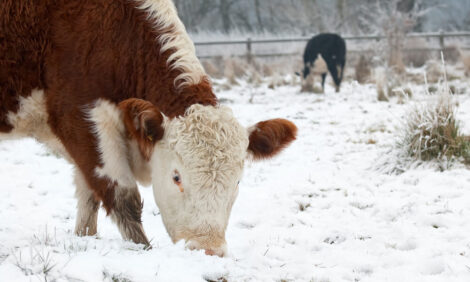



Revealing The Future Performance Of Your Cattle Herd, Years Ahead Of Time
AUSTRALIA - By 2010, less than three years away, Australia's largest integrated beef research program, the Beef Cooperative Research Centre (CRC) anticipates cattle breeders may be able to get an accurate assessment of a bull or a dam's future performance within a few months of its birth.The technology that would bring this revolution to life has already been developed; what Beef CRC scientists are about to test is whether it can become a commercial tool for the Australian beef industry. Professor John Gibson, Beef CRC Adaptation and Cattle Welfare Research Leader, says microarray technology has enabled the entire 23,000-odd separate genes of the bovine genome to be printed on one microarray plate the size of a microscope slide.
Research overseas indicates that how an animal expresses its genes in early life provides an accurate picture of its gene expression at breeding age.
Prof. Gibson
"This ability to get a full genetic overview of an animal could eventually lead to the grassroots application of microarray technology," Prof. Gibson says.
"Research overseas indicates that how an animal expresses its genes in early life provides an accurate picture of its gene expression at breeding age."
This leads to the prospect of microarrays being printed that carry genes of commercial interest, which could be then used to predict the breeding performance of young animals well before they reach breeding age.
Prof. Gibson observes that this would help breeders quickly eliminate genetically dud bulls and cows early in their life, without the costs of feeding and progeny testing now required to determine the duds.
It could also encourage the industry to join bulls at a younger age, speeding up genetic progress.
"If the cost of the technology comes down enough - and there's every possibility that it could - it would even be possible to test animals before they went into a feedlot, to see whether genetically, they were worth feeding and would deliver a return on investment," Prof. Gibson says.
All this is a radical leap from the process that Beef CRC researchers have been using to date, which involves teasing out the value of genes one-by-one, within herds that are carefully structured to highlight potential differences in gene expression.
The catch?
"At the moment, it's all blue sky stuff," Prof. Gibson says, "but the Beef CRC will be doing a small, low-cost pilot study on the technology in mid-2007, and that should give us a proof of principle. If that looks promising, we'll immediately follow up with some wider testing."
"We would hope that by the end of the current Beef CRC in 2012, we'll know whether we have a product that we can commercialise."
TheCattleSite News Desk


